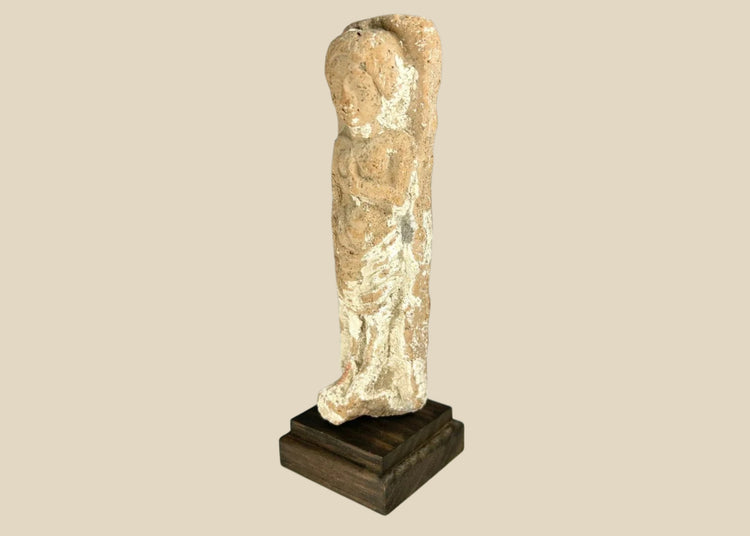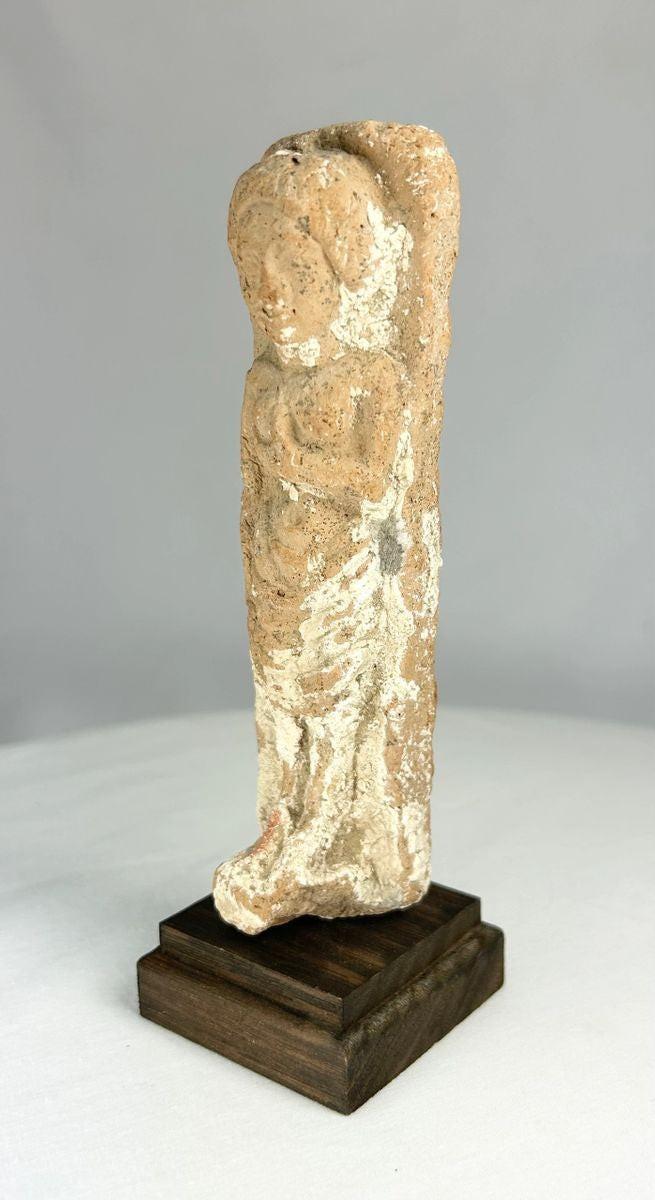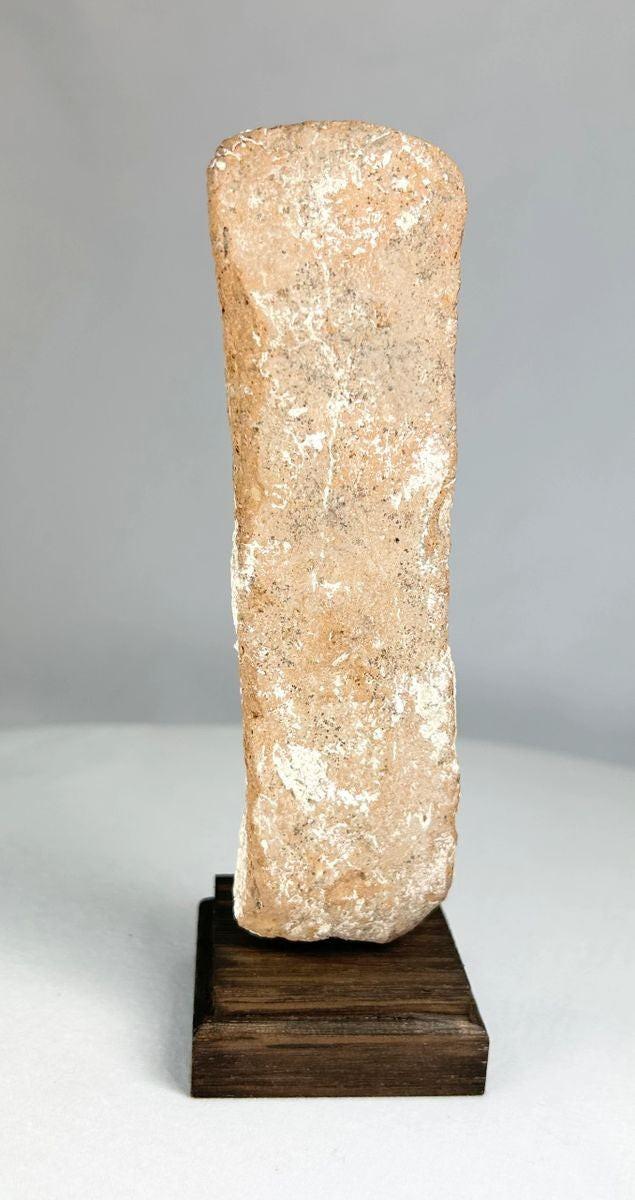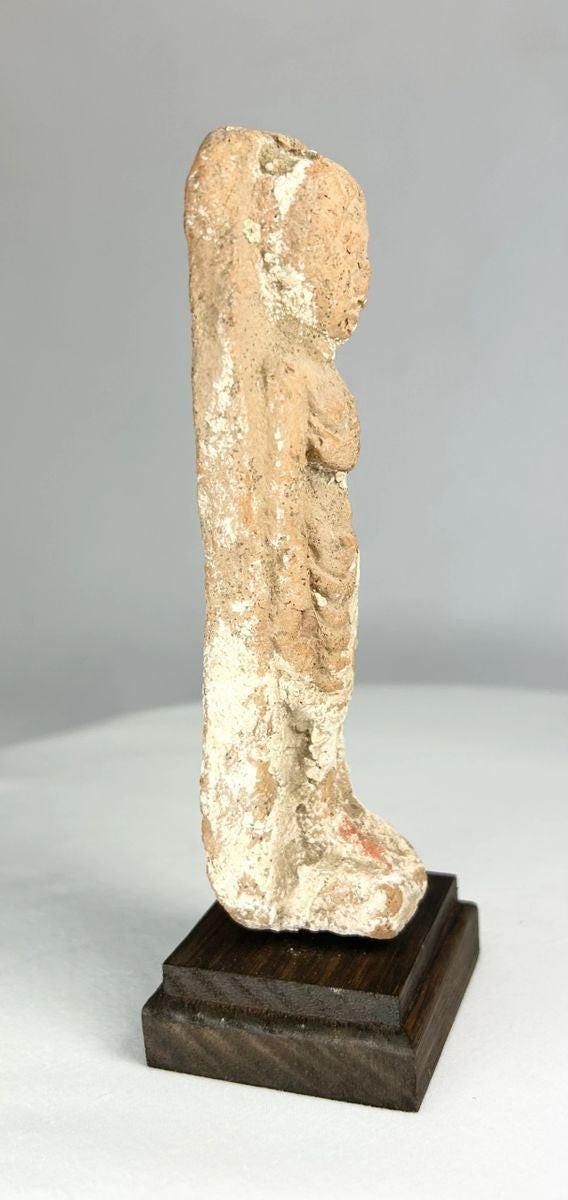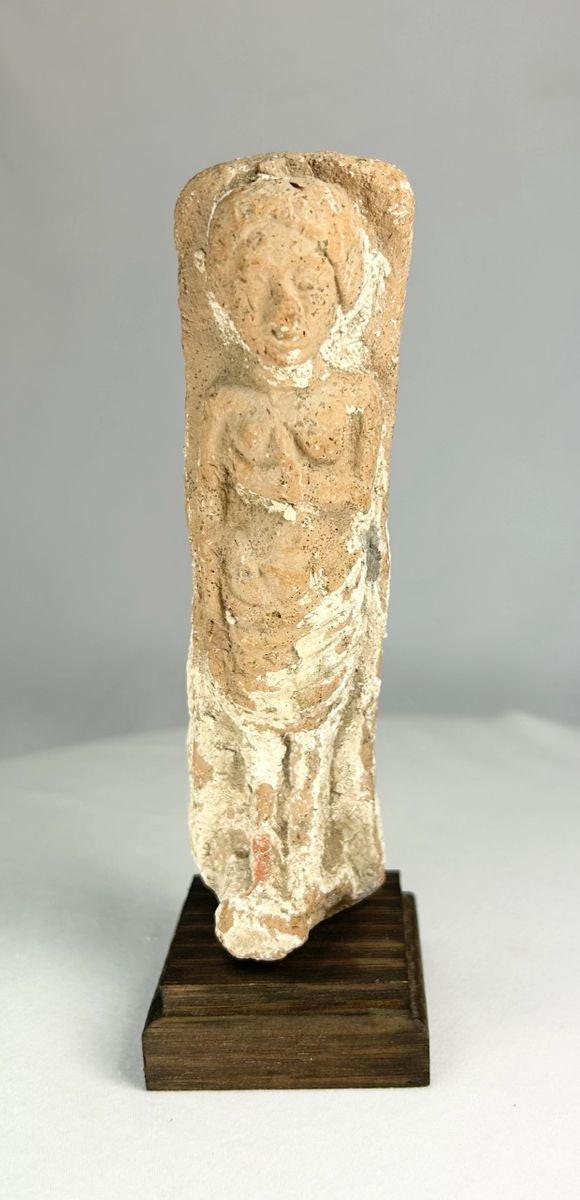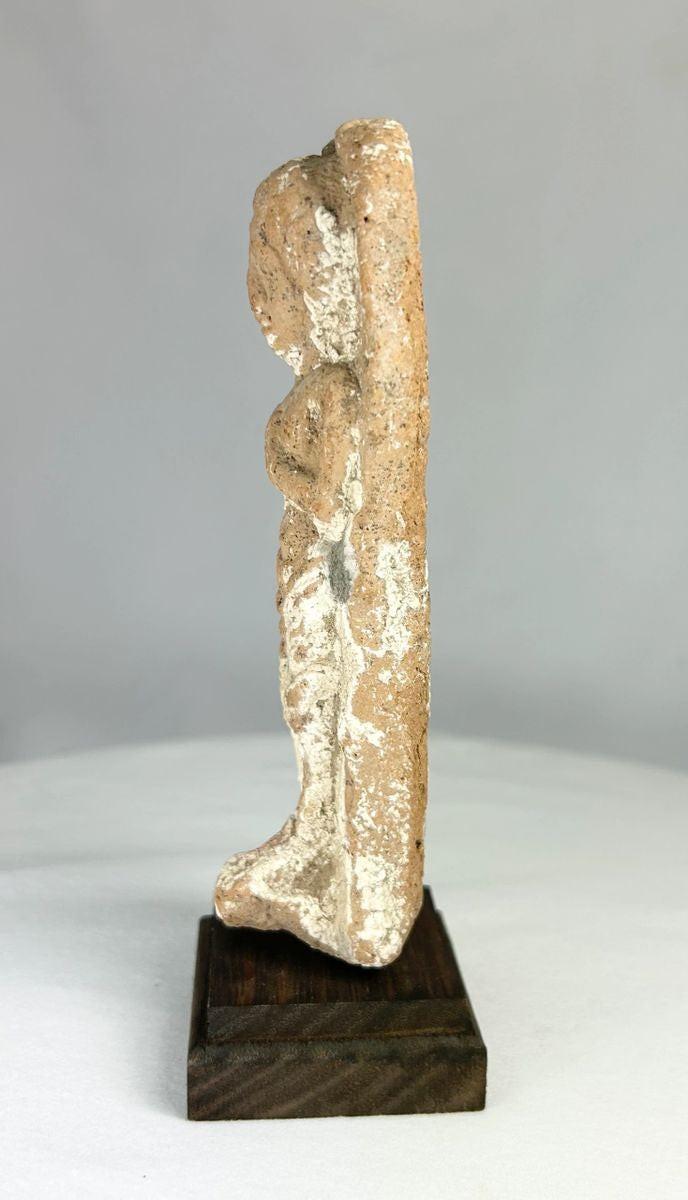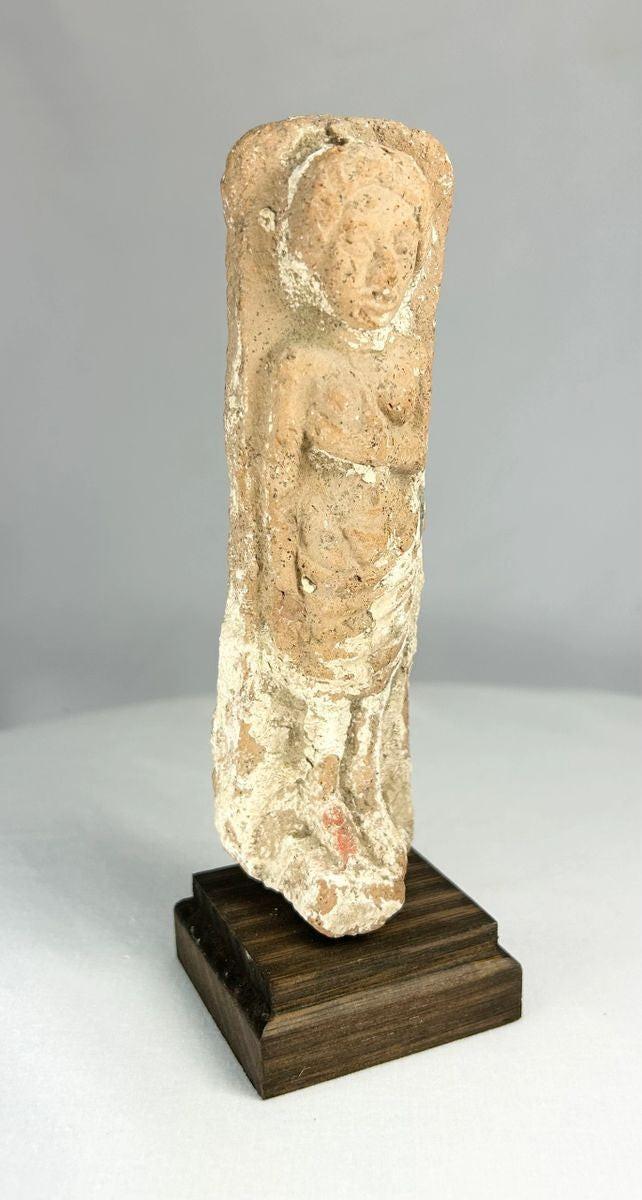Iron Age Levantine Figurine | Terracotta Fertility Goddess with Traces of Pigment | Circa 600–300 BCE
Description
More
Less
Historical Context & Origin
Region: Levant (Eastern Mediterranean – modern-day Israel, Lebanon, Syria, Jordan)
Material: Terracotta with traces of pigment
Period: Iron Age, circa 600–300 BCE
Description
This extraordinary terracotta figurine represents a fertility goddess from the Levant, dating to the Iron Age, approximately 600–300 BCE. Stylized in form, the figure depicts a female with one arm clutching her breast, a symbolic gesture of fertility, abundance, and divine protection. Once richly decorated, faint traces of white and red pigment remain, offering a glimpse into its original vibrant appearance and ceremonial role.
Features
- Stylized female form embodying fertility symbolism
- One arm raised to the breast, representing life-giving forces and abundance
- Traces of original red and white pigment visible on the surface
- Compact size suggesting use in personal ritual or household devotion
- Crafted from terracotta, a medium widely used for votive and ritual figures in the Iron Age Levant
Cultural Significance
Fertility figures played an essential role in the spiritual life of ancient Levantine societies. Revered as protectors of life and prosperity, such figurines were linked to agricultural abundance and the continuity of family and community. This piece reflects the religious and symbolic practices of the Iron Age, offering insight into the deeply spiritual worldview of the region.
Condition
The figurine shows natural wear consistent with its age, including surface weathering and minor abrasions. Traces of original pigment survive, enhancing its authenticity and historical value.
Dimensions (approximate)
Height: 6 in
Age
Circa 600–300 BCE
Learn More
Discover the Iron Age — where early empires rose, metal reshaped civilization, and belief systems evolved across the ancient world
Explore the Levant — the cradle of culture linking Mesopotamia, Egypt, and the Mediterranean
Description
Historical Context & Origin
Region: Levant (Eastern Mediterranean – modern-day Israel, Lebanon, Syria, Jordan)
Material: Terracotta with traces of pigment
Period: Iron Age, circa 600–300 BCE
Description
This extraordinary terracotta figurine represents a fertility goddess from the Levant, dating to the Iron Age, approximately 600–300 BCE. Stylized in form, the figure depicts a female with one arm clutching her breast, a symbolic gesture of fertility, abundance, and divine protection. Once richly decorated, faint traces of white and red pigment remain, offering a glimpse into its original vibrant appearance and ceremonial role.
Features
- Stylized female form embodying fertility symbolism
- One arm raised to the breast, representing life-giving forces and abundance
- Traces of original red and white pigment visible on the surface
- Compact size suggesting use in personal ritual or household devotion
- Crafted from terracotta, a medium widely used for votive and ritual figures in the Iron Age Levant
Cultural Significance
Fertility figures played an essential role in the spiritual life of ancient Levantine societies. Revered as protectors of life and prosperity, such figurines were linked to agricultural abundance and the continuity of family and community. This piece reflects the religious and symbolic practices of the Iron Age, offering insight into the deeply spiritual worldview of the region.
Condition
The figurine shows natural wear consistent with its age, including surface weathering and minor abrasions. Traces of original pigment survive, enhancing its authenticity and historical value.
Dimensions (approximate)
Height: 6 in
Age
Circa 600–300 BCE
Learn More
Discover the Iron Age — where early empires rose, metal reshaped civilization, and belief systems evolved across the ancient world
Explore the Levant — the cradle of culture linking Mesopotamia, Egypt, and the Mediterranean
You May Also Like




















